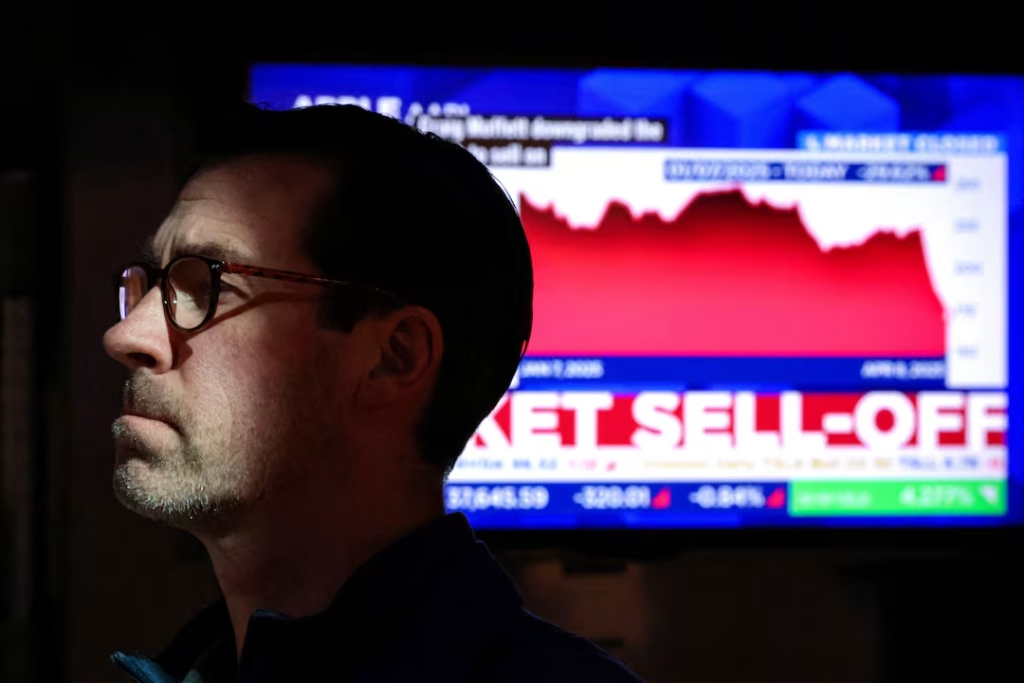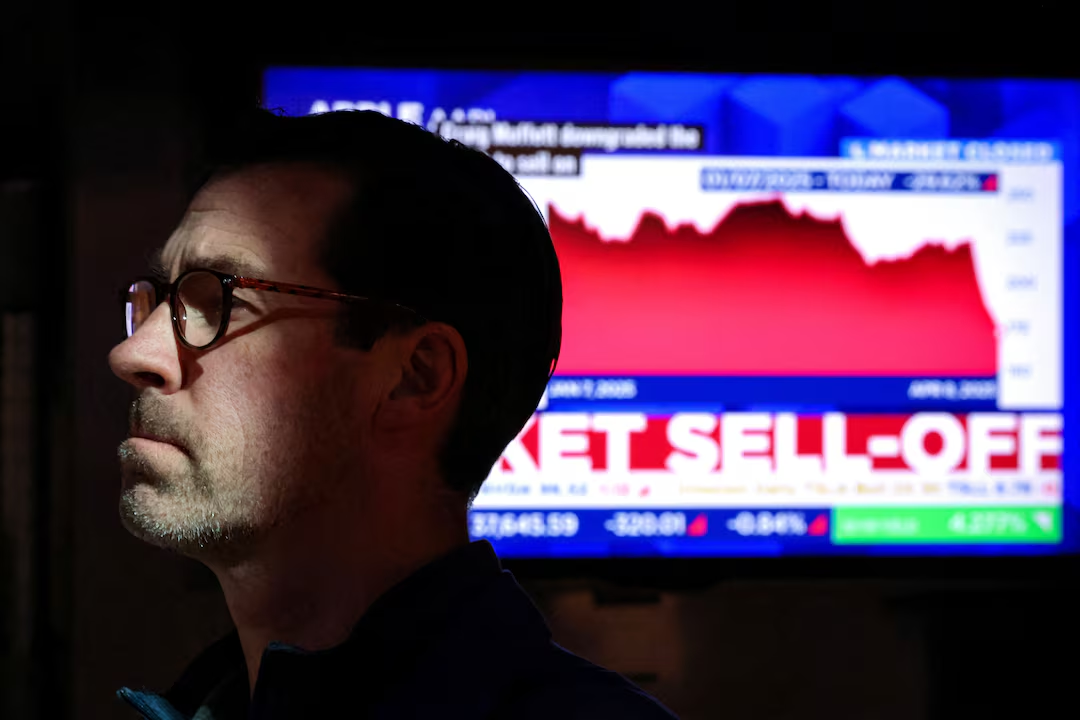
Global markets were shaken on Wednesday by the latest escalation in the trade war between the United States and China, which has unleashed a savage selloff in U.S. assets as investors dumped stocks, bonds and the dollar.
President Donald Trump’s eye-watering 104% tariffs on China came into effect on Wednesday, prompting a swift retaliation from Beijing in the form of duties of 84% on U.S. imports.
The seemingly wholesale push out of Treasuries and the dollar – effectively the backbone of the global financial system – could be symptomatic of a broader loss in investor desire to hold U.S. assets in general and “the end of an era”, according to Deutsche Bank head of foreign exchange research George Saravelos.
“We are witnessing a simultaneous collapse in the price of all U.S. assets including equities, the dollar versus alternative reserve FX and the bond market. We are entering uncharted territory in the global financial system,” he said.
This week has brought crisis-era volatility to markets, wiping off trillions of dollars in value from stocks and hitting commodities and emerging markets with force.
Many now fear Trump’s wide-ranging tariffs will be severe enough to trigger a recession and force the Federal Reserve into cutting interest rates, and so they dumped their Treasury holdings, driving up yields as bond prices dropped.
RELATED: Planned US auto tariffs shake global industry as price hikes
The dollar – usually the ultimate safe haven in times of turmoil – fell broadly, as investors dashed into the likes of gold and the Swiss franc, accelerating the flight from stocks and industrial commodities.
The benchmark U.S. 10-year note yield was up almost 20 basis points on the day at 4.456%, bringing its rise over the last three days to around 40 bps, one of the most aggressive increases in such a short timeframe in the last 25 years.
“Last week was an equity story but, as ever, it’s moved from an equity story to the more important bond story,” said Chris Beauchamp, chief strategist at IG. “This is the financial plumbing and clearly, the plumbing has begun to seize up.”
Potentially adding to the pressure on Treasuries was an auction of new 10-year notes later on – hot on the heels of a weak three-year sale the day before – that could prove a crucial litmus test of investor appetite for U.S. government debt.
COSTLY ‘GAME OF CHICKEN’
The shifting headlines on tariffs and the spectre of a prolonged trade war between the world’s two biggest economies has generated severe volatility across financial markets.
The S&P 500 was swept up in one of the biggest reversals in at least the last 50 years, with the benchmark index losing 4.2 percentage points from a positive start to a negative finish on Tuesday.

The index has lost $5.8 trillion in stock market value, the deepest four-day loss since it was created in the 1950s.
The VIX index of equity volatility has shot to 60 this week, its highest since August.
In Europe, the STOXX 600 (.STOXX), opens new tab fell nearly 4.5%, bringing the loss in market capitalisation since April 1 – the day before Trump unveiled his tariffs – to around $1.5 trillion.
U.S. stock futures were down almost 2% , .
Analysts at JPMorgan believed the rapid escalation in U.S. tariffs on China would be sufficiently disruptive to push the global economy into recession.
RELATED: Markets make a dicey bet on art of the trade deal
“Given the import bill from China, the China tariff alone amounts to a whopping $400 billion tax hike on U.S. households and businesses,” they said in a note to clients. “The currency is likely to be a release valve for China policymakers.”
Safe-haven currencies such as the yen and Swiss franc soared, leaving the dollar down 1.3% at 145.45 yen and down 0.8% to 0.84 Swiss francs .
Oil prices tumbled 6% to below $60 a barrel, as concern over the outlook for global energy demand outweighed any nervousness on the geopolitical front. Gold, meanwhile, rallied 3% to $3,070 an ounce.






